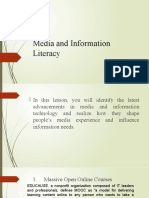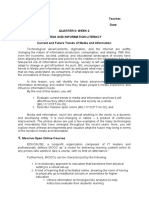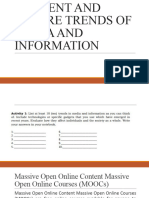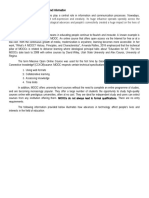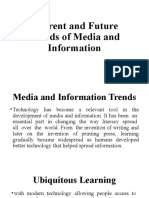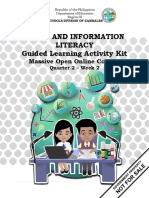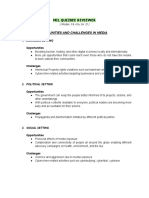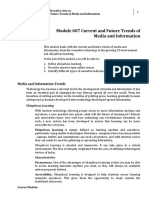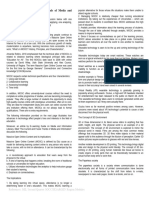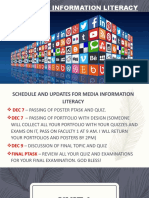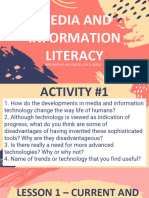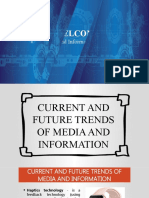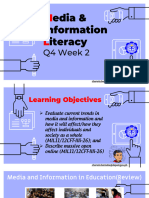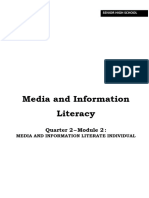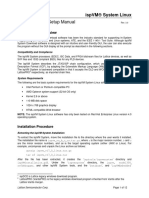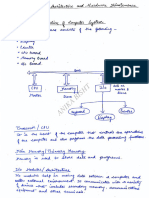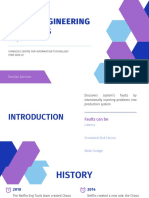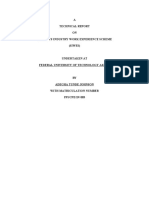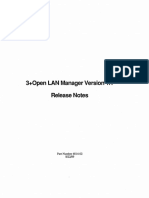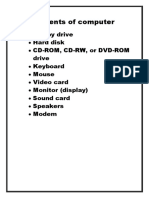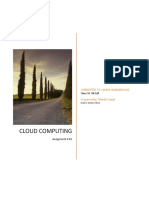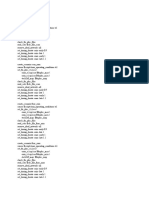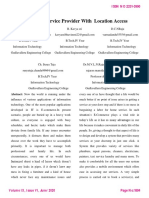0% found this document useful (0 votes)
119 views12 pagesMIL Q2 Module1
This module provides information on current and future trends in media and information for senior high school students. It discusses the impact of massive open online courses (MOOCs) and how emerging technologies like virtual reality, artificial intelligence, and wearable devices will continue to transform how people interact, communicate, learn, and conduct business. Students are expected to describe the impact of MOOCs and evaluate how current trends in media and information affect both individuals and society. The document outlines an activity for students to list 10 trends in media/technology and how they impact people. Examples of MOOC platforms like edX and courses offered are also provided.
Uploaded by
sittinginthecorner1Copyright
© © All Rights Reserved
We take content rights seriously. If you suspect this is your content, claim it here.
Available Formats
Download as DOCX, PDF, TXT or read online on Scribd
0% found this document useful (0 votes)
119 views12 pagesMIL Q2 Module1
This module provides information on current and future trends in media and information for senior high school students. It discusses the impact of massive open online courses (MOOCs) and how emerging technologies like virtual reality, artificial intelligence, and wearable devices will continue to transform how people interact, communicate, learn, and conduct business. Students are expected to describe the impact of MOOCs and evaluate how current trends in media and information affect both individuals and society. The document outlines an activity for students to list 10 trends in media/technology and how they impact people. Examples of MOOC platforms like edX and courses offered are also provided.
Uploaded by
sittinginthecorner1Copyright
© © All Rights Reserved
We take content rights seriously. If you suspect this is your content, claim it here.
Available Formats
Download as DOCX, PDF, TXT or read online on Scribd
/ 12





















